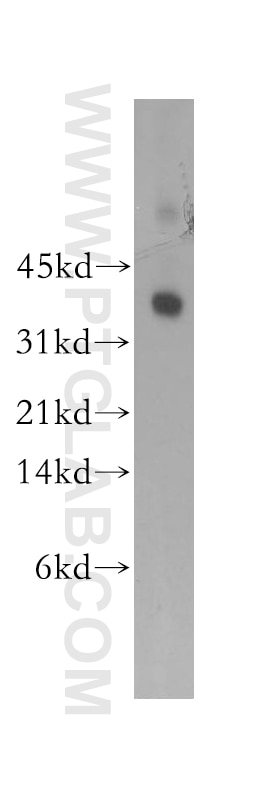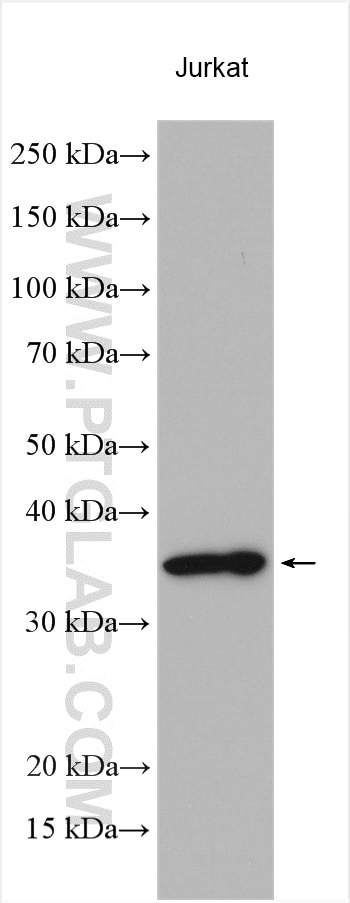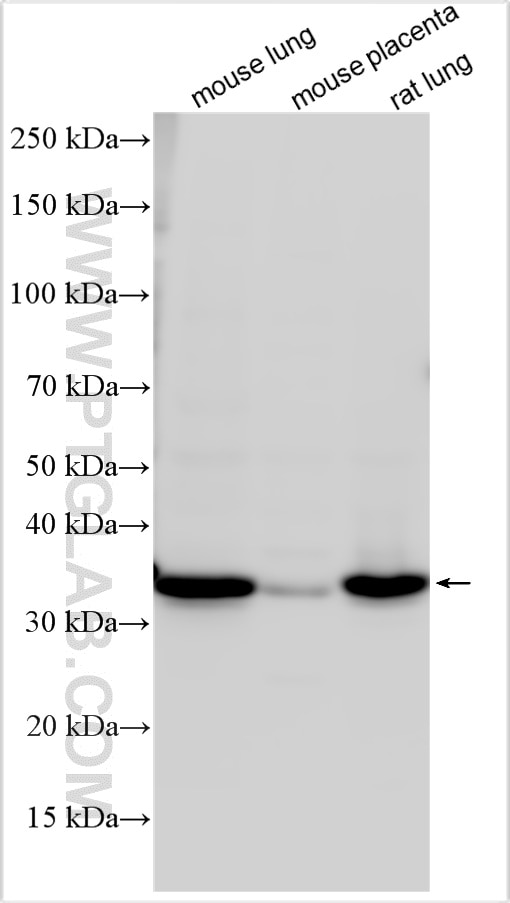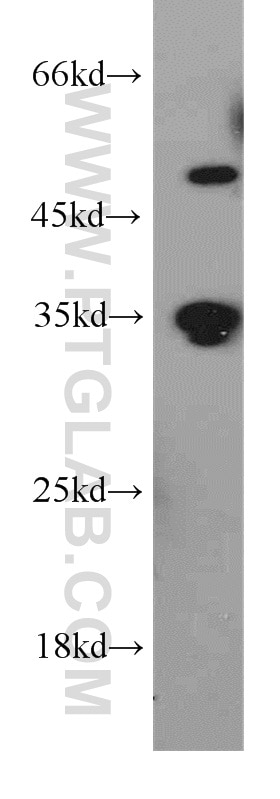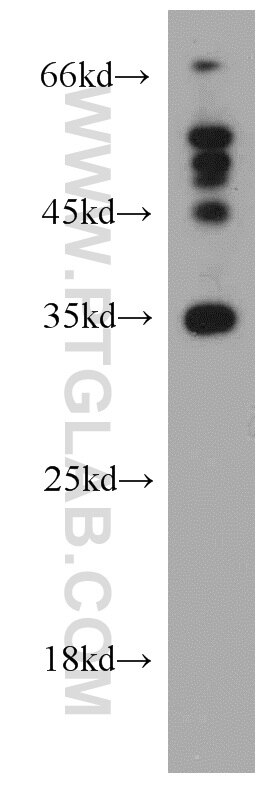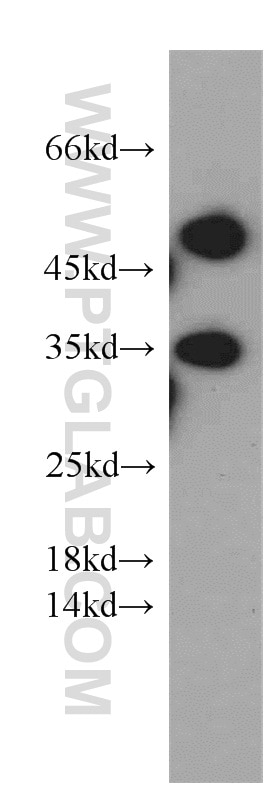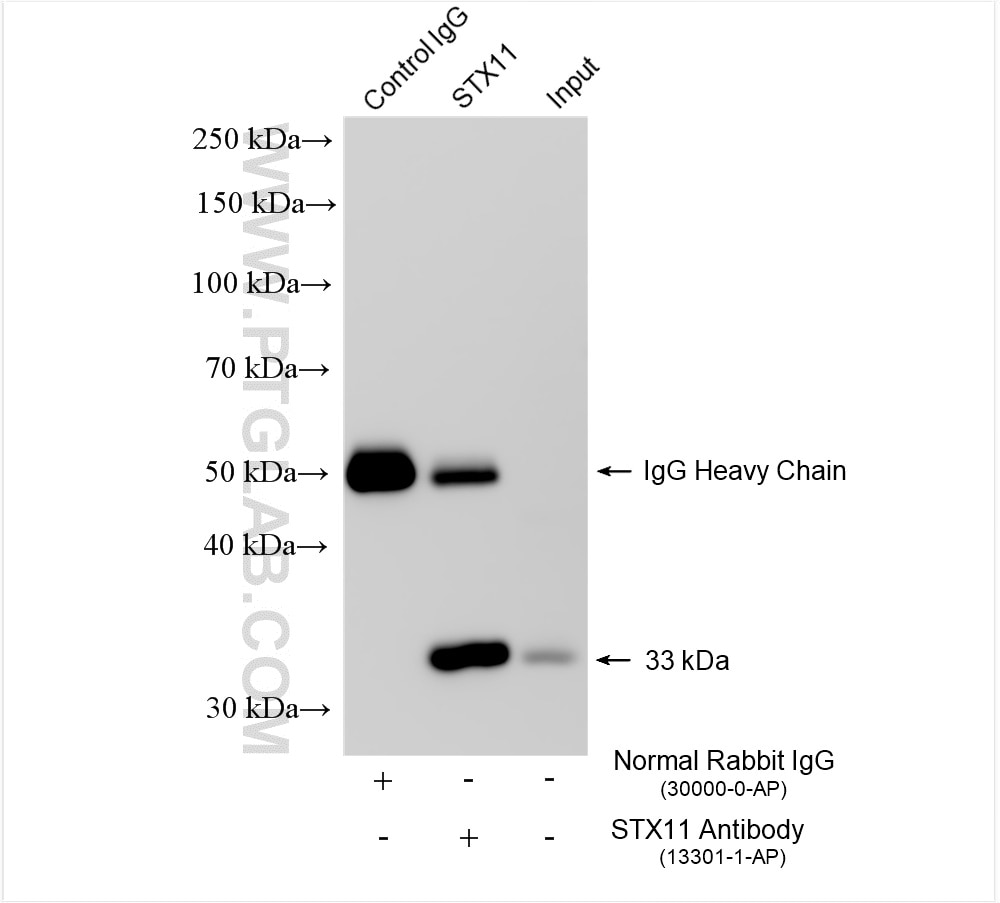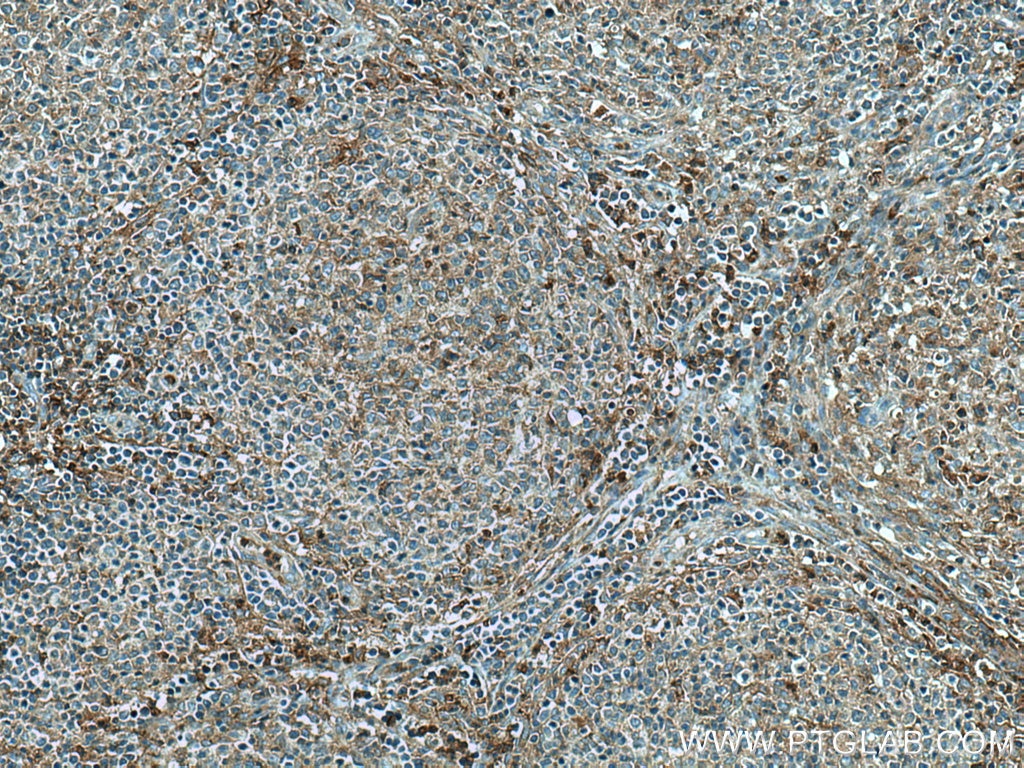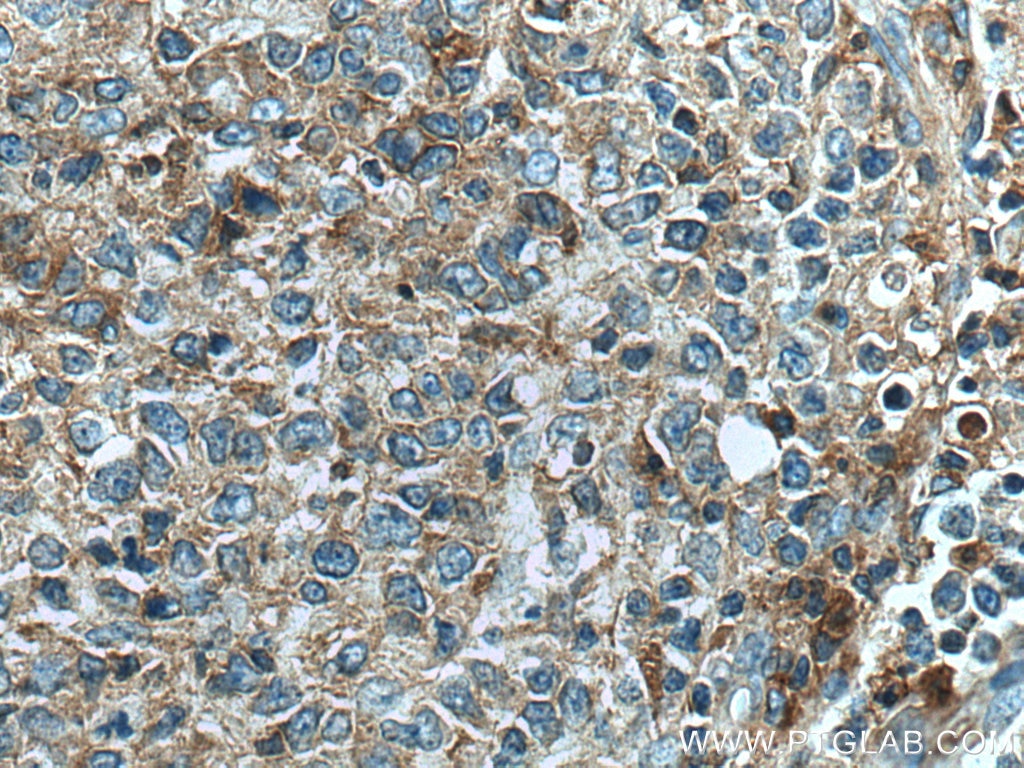- Phare
- Validé par KD/KO
Anticorps Polyclonal de lapin anti-Syntaxin 11
Syntaxin 11 Polyclonal Antibody for WB, IHC, IP, ELISA
Hôte / Isotype
Lapin / IgG
Réactivité testée
Humain, rat, souris
Applications
WB, IHC, IF, IP, ELISA
Conjugaison
Non conjugué
N° de cat : 13301-1-AP
Synonymes
Galerie de données de validation
Applications testées
| Résultats positifs en WB | tissu pulmonaire de souris, cellules DU 145, cellules Jurkat, cellules L02, tissu de muscle squelettique humain, tissu placentaire de souris, tissu placentaire humain, tissu pulmonaire de rat |
| Résultats positifs en IP | cellules DU 145, |
| Résultats positifs en IHC | tissu de lymphome humain, il est suggéré de démasquer l'antigène avec un tampon de TE buffer pH 9.0; (*) À défaut, 'le démasquage de l'antigène peut être 'effectué avec un tampon citrate pH 6,0. |
Dilution recommandée
| Application | Dilution |
|---|---|
| Western Blot (WB) | WB : 1:2000-1:16000 |
| Immunoprécipitation (IP) | IP : 0.5-4.0 ug for 1.0-3.0 mg of total protein lysate |
| Immunohistochimie (IHC) | IHC : 1:50-1:500 |
| It is recommended that this reagent should be titrated in each testing system to obtain optimal results. | |
| Sample-dependent, check data in validation data gallery | |
Applications publiées
| KD/KO | See 2 publications below |
| WB | See 16 publications below |
| IHC | See 2 publications below |
| IF | See 6 publications below |
| IP | See 2 publications below |
Informations sur le produit
13301-1-AP cible Syntaxin 11 dans les applications de WB, IHC, IF, IP, ELISA et montre une réactivité avec des échantillons Humain, rat, souris
| Réactivité | Humain, rat, souris |
| Réactivité citée | rat, Humain, souris |
| Hôte / Isotype | Lapin / IgG |
| Clonalité | Polyclonal |
| Type | Anticorps |
| Immunogène | Syntaxin 11 Protéine recombinante Ag4097 |
| Nom complet | syntaxin 11 |
| Masse moléculaire calculée | 287 aa, 33 kDa |
| Poids moléculaire observé | 33-35 kDa |
| Numéro d’acquisition GenBank | BC033519 |
| Symbole du gène | Syntaxin 11 |
| Identification du gène (NCBI) | 8676 |
| Conjugaison | Non conjugué |
| Forme | Liquide |
| Méthode de purification | Purification par affinité contre l'antigène |
| Tampon de stockage | PBS with 0.02% sodium azide and 50% glycerol |
| Conditions de stockage | Stocker à -20°C. Stable pendant un an après l'expédition. L'aliquotage n'est pas nécessaire pour le stockage à -20oC Les 20ul contiennent 0,1% de BSA. |
Informations générales
Syntaxin 11 (STX11) belongs to the syntaxin family. It interacts with the SNARE proteins SNAP-23 and VAMP. STX11 behaves as an integral membrane protein despite the lack of a traditional transmembrane domain. The detection of STX11 in human cytotoxic lymphocytes suggests that this protein could play a role in the process leading to degranulation of secretory lysosomes (PMID:17525286).
Protocole
| Product Specific Protocols | |
|---|---|
| WB protocol for Syntaxin 11 antibody 13301-1-AP | Download protocol |
| IHC protocol for Syntaxin 11 antibody 13301-1-AP | Download protocol |
| IP protocol for Syntaxin 11 antibody 13301-1-AP | Download protocol |
| Standard Protocols | |
|---|---|
| Click here to view our Standard Protocols |
Publications
| Species | Application | Title |
|---|---|---|
J Extracell Vesicles Identification of the SNARE complex that mediates the fusion of multivesicular bodies with the plasma membrane in exosome secretion
| ||
J Exp Med Transcriptional regulation of Munc13-4 expression in cytotoxic lymphocytes is disrupted by an intronic mutation associated with a primary immunodeficiency. | ||
Proc Natl Acad Sci U S A Crucial role of the hydrophobic pocket region of Munc18 protein in mast cell degranulation. | ||
J Cell Sci Chaperoning of closed syntaxin-3 through Lys46 and Glu59 in domain-1 of Munc18 is indispensable for mast cell exocytosis. | ||
Front Immunol Bi-Allelic Mutations in STXBP2 Reveal a Complementary Role for STXBP1 in Cytotoxic Lymphocyte Killing. |
